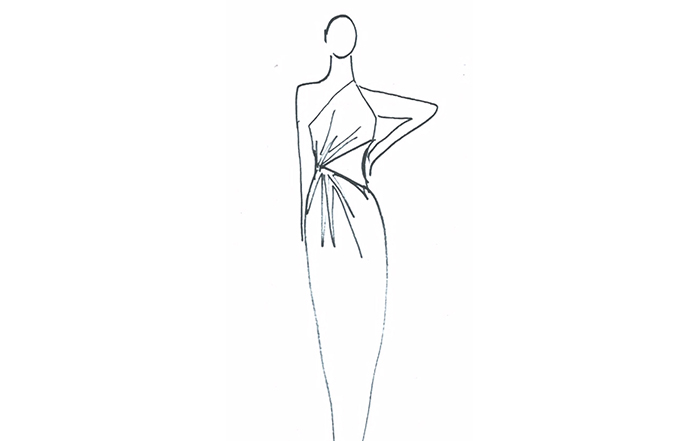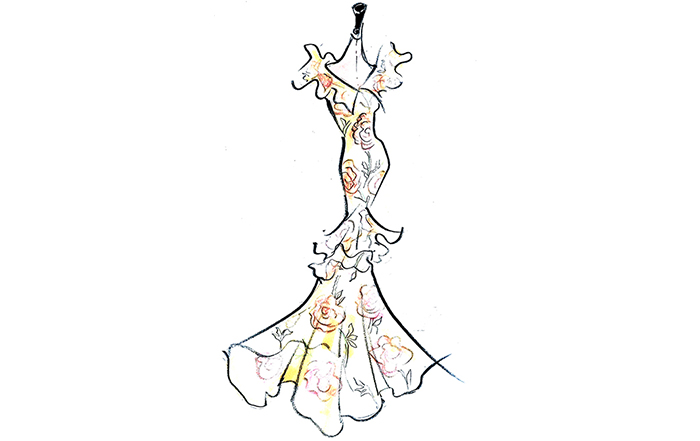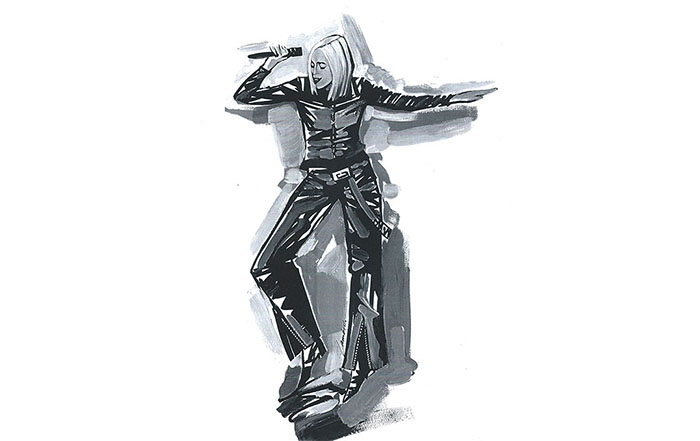 Bradley Scott Showroom, September 15th, 2011
Bradley Scott Showroom, September 15th, 2011
In these last days prior to Fashion Week, what’s your state of mind and what are you thinking about?
Conventionally, as a designer, I’d be preparing for a fashion show or presentation. Practically, I realize that the investment in this method remains a high cost to the value of the show, and have opted to once again show my collection privately by appointment. I am thinking about what the reactions might be, preempting them with changes now so to avoid any pushback during the appointments. My state of mind is relaxed, with the usual stress of getting it done, and apprehension of how things will be received.
How important is social media to your business: are you everywhere – brick-and-mortar, e-commerce, TV, Twitter and Facebook, 24/7, and are you live streaming your show?
Social Media has not been a crucial aspect to my business. For me, word of mouth, cold calling, and private clients have carried me this past season and I have improved my business. At a later time when my e-commerce site (in the works) is up and running, twitter and facebook will be more crucial.
Given the current economic picture, how confident are you about the spring season?
The current economic picture is indeed grim. To pretend that the sun is shining and women are going to continue shopping as they did pre-2008 is not only wrong, but irresponsible at the same time. Stores have trained women to wait until garments are on sale. I am confident that I approached the season with a smart attitude. Fabrics were kept within a relative budget, a new factory was sourced to offer better production prices (still right here in NYC), and I made sure each piece looked more expensive than what it actually retails for.
What do you think consumers will be looking for come spring?
Women want many things this season, as they always do each season. However, the “value factor” must be involved in each purchase made this spring. Thus, the buyers from retailers are going to approach their sales appointments with this in mind; there will be an element of cautiousness. Consumers will ultimately want value and a sense of uniqueness. Something they don’t already own, and won’t empty their wallets. >From a design point of view, I feel they will want to stay on comfortable trends, special plaids, rich colors such as Sapphire, Sage, Magenta, sensations of happiness and freshness.
Do you agree with the concept of buy now/wear? And, if so, what can be done to better facilitate that timing?
I certainly do agree with “Buy Now / Wear Now”. At each FGI panel discussion I ask the same question of the retailers on the stage. Nothing has really settled in the minds of retailers. Example – I’ve just shipped my Fall collection 12 different stores. I am shipping warm coats and wool jacquard dresses, and the temperature outside hovered around 80 degrees this week. I wouldn’t be surprised if none of those heavier pieces sold. When cash flow is crucial for today’s survival, how is this current delivery calendar logical? It stems from all the stores trying to have a longer shelf life for the collections, which I completely understand. I’d also want to have 2 months time to sell the same product, but it doesn’t make it any more effective to ship a floral silk light weight chiffon for a January 30th delivery than it does to try and sell a ketchup popsicle to a woman wearing head-to-toe white.
Studies show that brands must create an emotional connection with consumers through a compelling story. Do you think you accomplish that with your brand and, if so, how?
That’s a very hard question to answer. I create clothing for real women, who don’t want to dress like their daughters. They are looking to wear clothing that looks amazing on them, while giving off a youthful, confident appearance. I think therein lies the emotional connection. A designer that can’t make a woman feel happy while looking at the mirror is simply not reaching to her soul.
Research also indicates that consumers have transitioned from conformity – embracing whatever trend is hot – to customization; something special for them. Is this true of your end-user and, if so, how do you accommodate that customer?
Research also indicates that consumers have transitioned from conformity – embracing whatever trend is hot – to customization; something special for them. Is this true of your end-user and, if so, how do you accommodate that customer?
The idea of “something special for them” really hits home for me this season. As mentioned above, I have retail partners as well as private clients who all ask me the same question. “Will someone else be in this same dress somewhere in the near proximity”. If the answer is yes, the dress is either passed on, or asked for a modification. The desire to own something that no one else has is immediately an attractive factor. I don’t think my customer cares about trends. I hate to put down fashion magazines and editors because I truly value their opinion, but just because a certain editor at a certain magazine (no names…) says that they must own a black tulle skirt this season, it certainly does not make the woman in Oklahoma City change how she feels about her wardrobe needs. The same goes with color – in the event that Teal Blue is all the rage, Page 245 in X Magazine is not going to make the woman who loves to wear Red change her mind.




